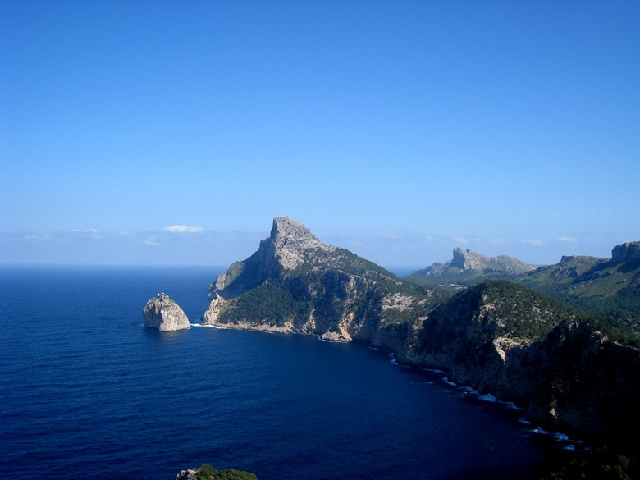Midland Diary No 7 From the Mediterranean

The sharp eyed among you will have spotted thatís not Wolverhampton, and also not so exotic as fellow diarist John with his trip to Borneo and Malaysia but weíve also been away for our usual mid February jaunt to the Mediterranean to catch a bit of sun and hopefully, a few early flowers.† This time, we visited Mallorca for our third visit.† Last time we were there, in 2004, it snowed and the north of the island was cut off from the south (they said it was the worst weather for 40 years).† So this time, we were pleased to encounter very pleasant weather.†
Gardens
Wherever we travel in the world, it is always interesting to see what people grow in their gardens.† We all push the limits of what we can grow in our gardens, as most people donít usually grow the flora native to their own area.† The Mediterranean is often thought of as an ideal climate with hot dry summers and frost free winters.† Some familiar plants that we grow in the UK as house plants or conservatory plants are happy growing outdoors in Mediterranean gardens.† For example, Crassula ovata from South Africa,
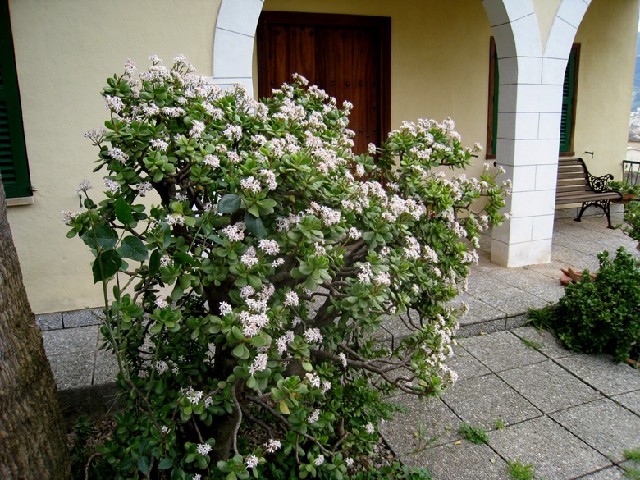
Agave
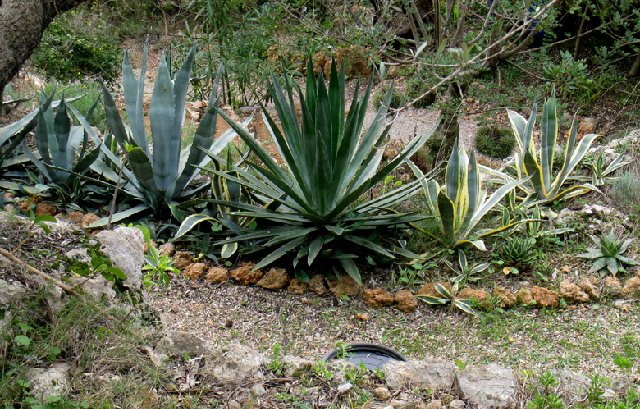
and the florists forms† of Cyclamen persicum from further east in the
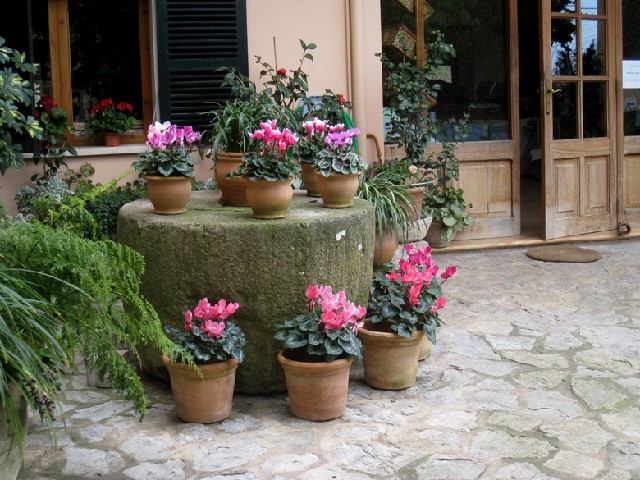
Commercial crops
The east of the island of Mallorca is relatively flat and fertile and horticulturally productive.†† However, we were based in the west of the Island, where the land is more mountainous.† Much of the area is neatly terraced to make best use of the land.† The main commercial crops were oranges on the lower slopes, and olives on the drier rocky sloping land.†
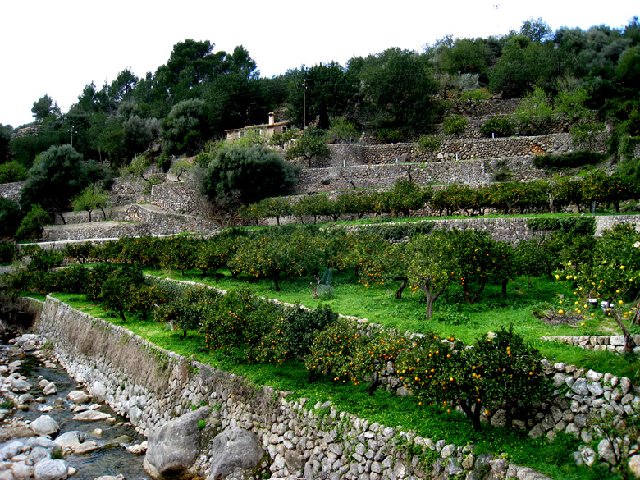
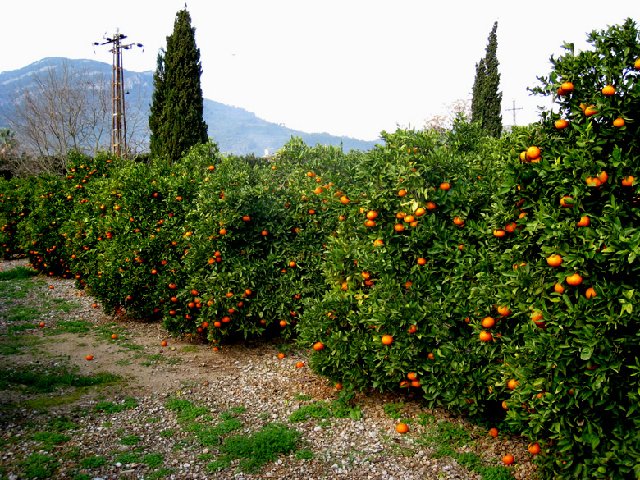

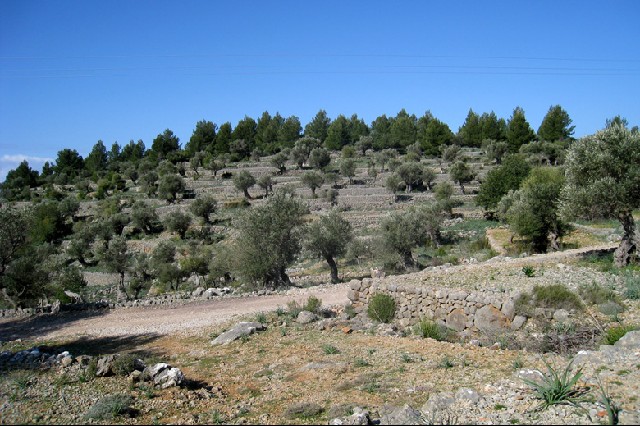
Shady sites
Some of the olive trees were clearly very old and had been pruned to regenerate them.
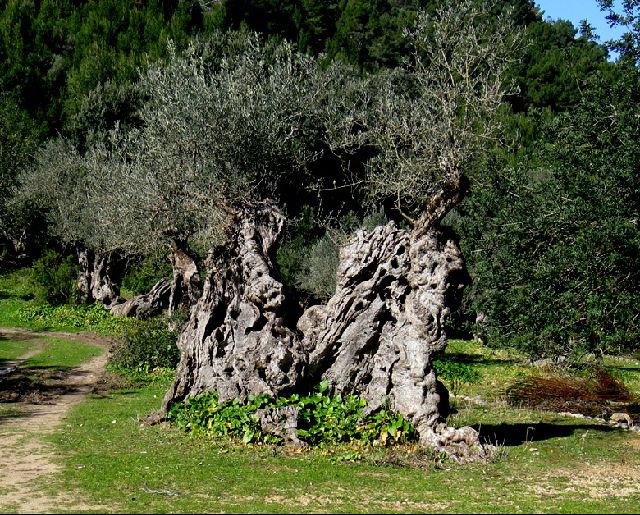
At the base of the olive trees is a little micro habitat and in February some plants were taking advantage of these sites.† I imagine that these areas around the tree roots are less likely to grazed by goats and also maybe the weedkiller is not sprayed right up to the base of the trees.† There were extensive areas of Arisarum vulgare growing.
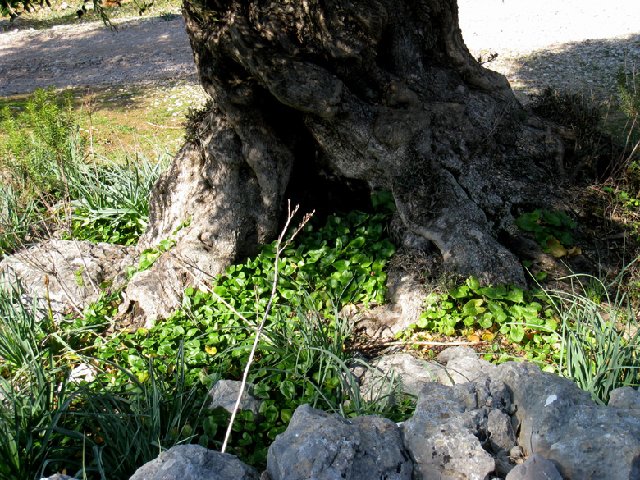
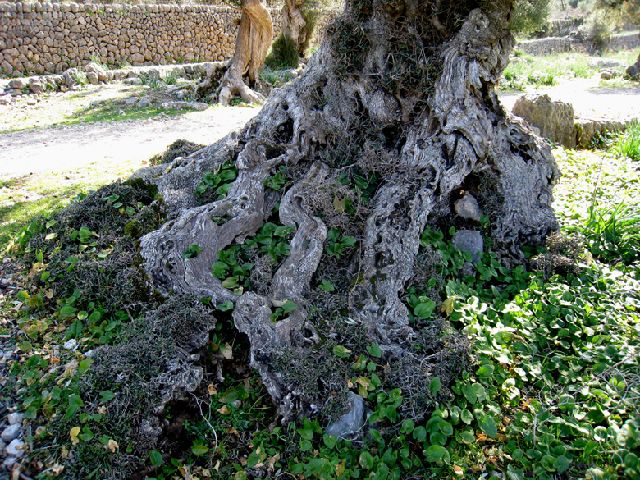
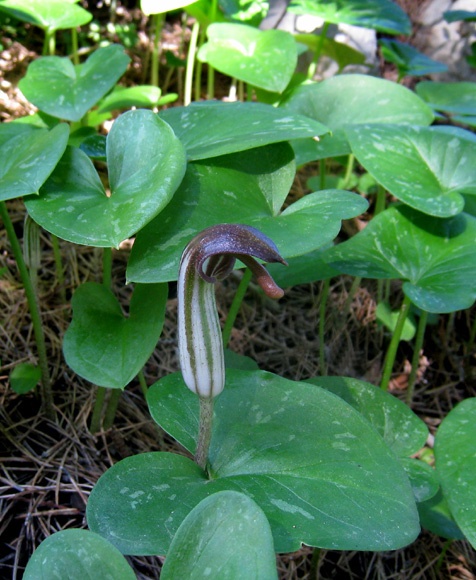
Also in some areas we also found Cyclamen balearicum growing in similar sites, and also among rocks.† Both the cyclamen and the arisarum are dormant at the hottest time of the year, from early summer until autumn and during that time rest underground as tubers, shaded beneath the roots of these ancient trees or under rocks.††
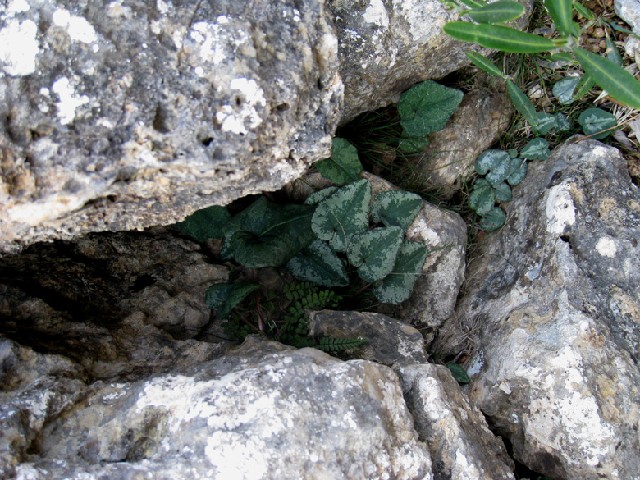
Sadly the Cyclamen was not yet in flower but we enjoyed seeing the variety of leaf forms
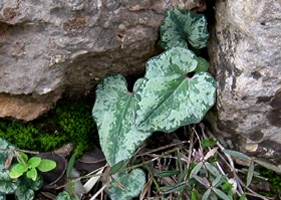
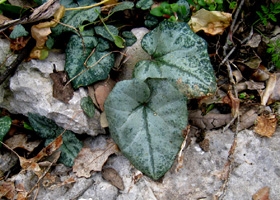
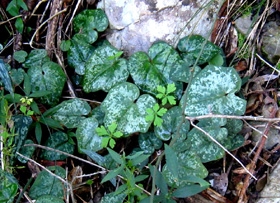
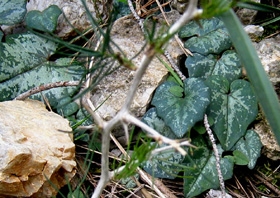
In this hot climate, other areas of shelter were found along the north side of walls by Umbilicus rupestris
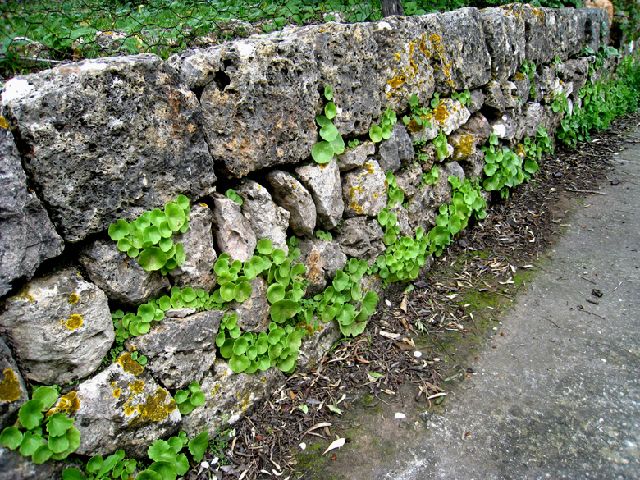
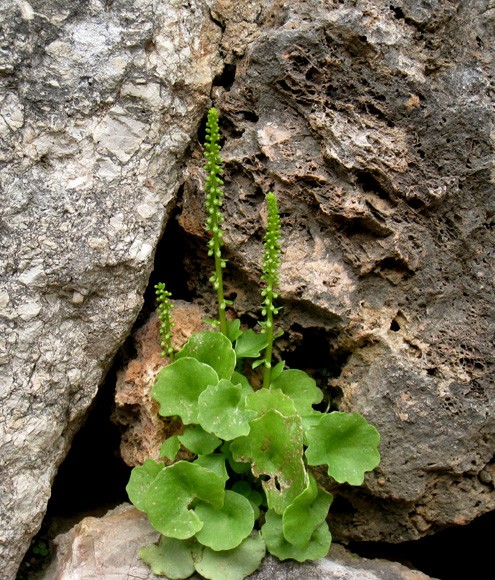
We were hoping for a few early orchids, but the only ones we found were Ophrys fusca and Barlia robertiana in their varied forms
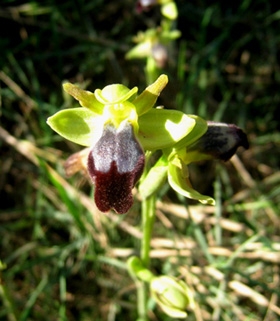
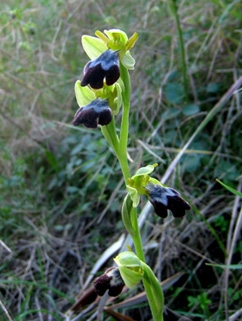
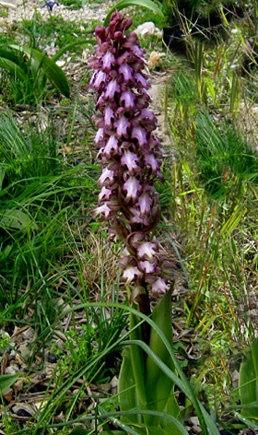

Arid sites
In rocky dry areas, plants need to be well adapted to cope with the hot summer climate
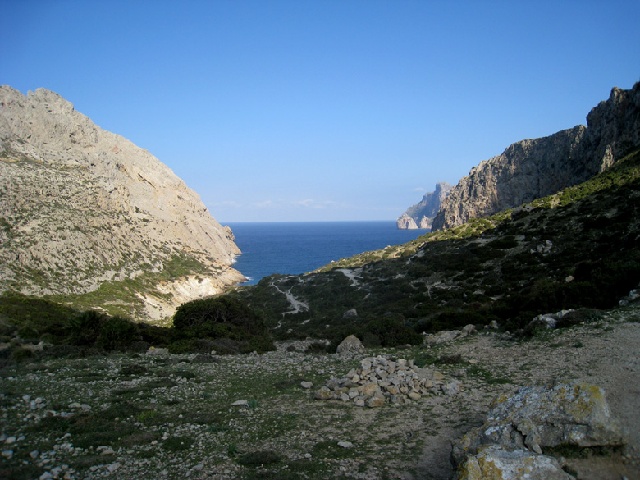
Here at the Boquer valley, tough shrubs dominate the landscape, including Pistachia lentiscus, Quercus ilex, Pinus halepensis,
Chamaerops humilis, the European palm is at the front right of the picture and in close up in the following picture
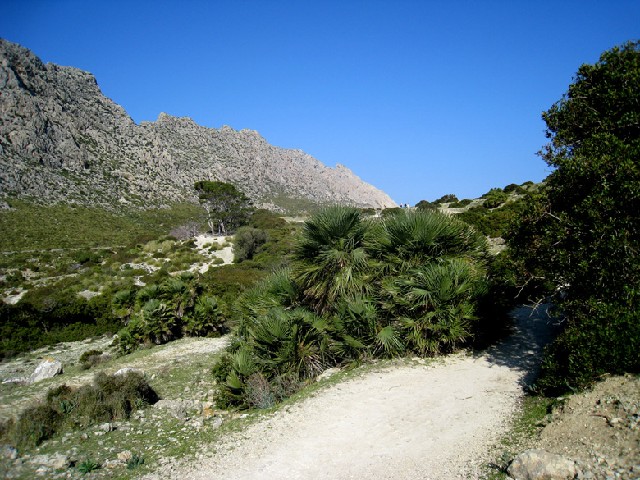
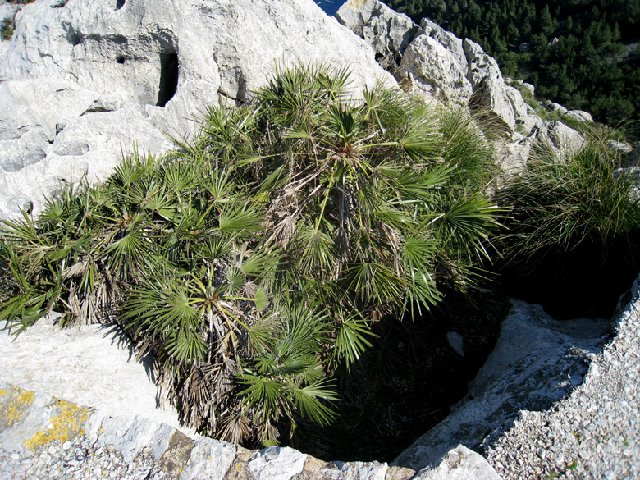
and the familiar Rosmarinus officinalis - how wonderful to see it in its native habitat
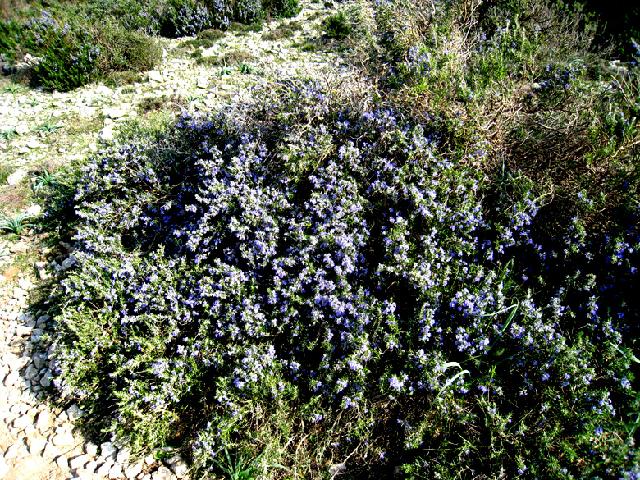
†And a final view of this beautiful island to finish, before returning to the UK
